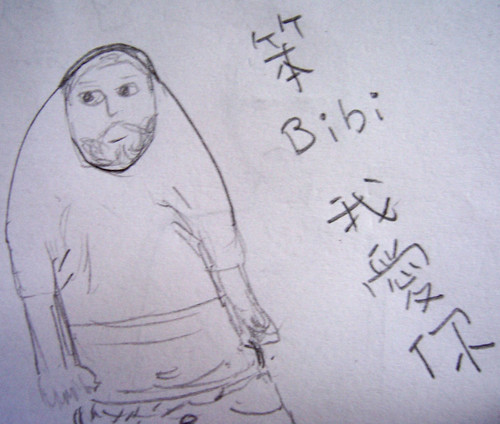Drawing conclusions: Mohammed's image a pretty familiar site

A Long History of Muhammed drawings:
Muhammad on Museum Walls
As they understand it, the Koran does not forbid representations of Muhammad, though other revered texts have led millions of Muslims to scorn the idea. They know that many Islamic artists have taken on the subject. And they know that pictures of Muhammad — not caricatures, but respectful representations, executed by and for Muslims, sometimes with the prophet's face shrouded by a veil, sometimes not — can be found in museums throughout Europe and North America.
By happenstance, curators say, none of the artworks at LACMA, the Freer or the Met were on public display when protests erupted late last year following publication in Denmark of a dozen newspaper cartoons lampooning Muhammad. But most of the museum-held portrayals of Muhammad can be accessed through the museums' Internet sites, along with some explanatory text.
...
At LACMA, Islamic art curator Linda Komaroff said: "We've always known about these images, and no one's ever had a problem, because they are respectful.... I wish this whole issue would go away because it's so incendiary."
In Art Museums, Portraits Illuminate A Religious Taboo
"Of course such depictions exist," says Sayyid Syeed, secretary general of the Islamic Society of North America. "What is important to remember is that they were never widely available. Had they been, the common people surely would have resented them. But they were made for powerful dynasties, and no one could take them to task.
"Today the consensus is strong. From Morocco to Indonesia, our tradition prohibits such images."
Those rough cartoons from Denmark were intended to enrage. They do what they set out to do. Published in a bunch, they disrespect the faith. The paintings of the prophet found in grand museums aren't like that at all.
Here are LOTS of examples for you arranged in chronological order:
From Rashid al-Din's Jami al Tawarikh (Compendium of Chronicles) - here's a page from the Met (with pictures) explaining some history of the book.
-----Khalili Collection Ms 727, Rashid al-Din's Compendium of Chronicles, f3a: Muhammad conquers Mecca, 1314, painted Iran.
-----Edinburgh University Library MS Arab 20, Rashid al Din's Compendium of Chronicles, Scene of the Birth of Muhammad, 1315, painted Iran. The baby Muhammad has a visible face. Here's a link to an image of ONE folio, though not one showing Muhammad.---Topkapi Sarayi Library, Istanbul, B.282 Kulliyyat-i Tarikhi of Hafiz-i Bru, folio 171A: Muhammad Conquers Mecca, 1415-1416, painted Afghanistan -- Muhammad's face is a golden wash of fire and he stands in front of a gold background. F 169A shows Ali storming a fortress.
---Topkapi Sarayi Library, Istanbul, MS Hazine 2154, F 107:Muhammad describing Jerusalem, 1400-50, painted Iran -- FULLY FACED Muhammad.
---Paris, Bib Nat, SupplTurc 190, Hari-Malik Bakhshi, Mi'rajnama, folio 34B: Muhammad and the Angel Gabriel, 1425-50, painted Afghanistan. Fully faced Muhammad, both Muhammad and Buraq encased in flames.
---Khalili Collection MSS 620, The Giant Uj* and the Prophets Moses, Jesus and Muhammad, 15th Century book, painted Iraq - click this link, choose Publications, choose Vols XXV-XXVI, scroll down - it's the image in the left margin. I can't find the folio information without going to our library and the Khalili collection doesn't allow access to pages deep in the directory. Sorry.
---London, British Museum. Mi'raj, 1497, painted Iran. The thumbnail image I can see looks like a fully-faced Muhammad, but it won't enlarge and I'm not sure.
---Worcester Art Museum, page from a Khamseh of Nizami, Mi'raj, Muhammad on Buraq, 1550, painted Iran. Here's a link to a page from the book, but like the Edinburgh link not to the correct page. It begins to make me wonder if the curators are avoiding controversy by keeping the Muhammad images off the internet?
---Freer Gallery, Washington, Jami, Haft Awrang (Seven Thrones), F 275A, Mi'raj, Muhammad on Buraq, painted Iran, 1556-65. Go here, scroll to Arts of the Islamic World, choose the last virtual exhibition -- your tax dollars at work!! Choose the first poem of the 7 - "Chain of Gold." The Ascent of Muhammad (the Mi'raj) is the 4th page in. There's a nice note on the use of the veiled prophet (anyone from St. Louis reading? That's where it comes from.).
---Topkapi Sarayi Library, Istanbul, MS.Hazine 1221, Kitab Siya-i Nabi (Life of the Prophet), multiple scenes from the life, including the Birth, Call by Gabriel, the Call to Prayer from the top of the Kaba, the Mi'raj, and the Death of the Prophet, 1594, painted Turkey.
Some other useful things
Here is a useful piece on the Night Journey of Muhammad, the Mi'raj, from Wikipedia. Perhaps its explanation of the mystical content will help you understand why this is such a common IMAGE of Muhammad.The Wikipedia article on Buraq, the steed of Muhammad, even has a picture optimistically described as "public domain." I don't recognize it (it's not a great reproduction and, like I said, I'm not a specialist). It shows a veiled Muhammad.
Technorati tags: cartoons, Mohammed, religion, culture, politics, Art, Islam




0 Comments:
Post a Comment
<< Home